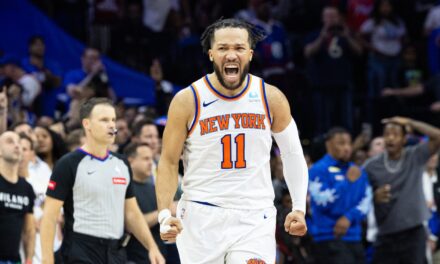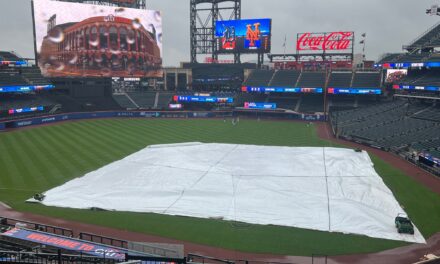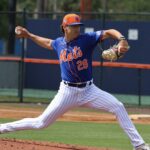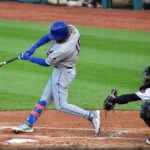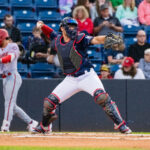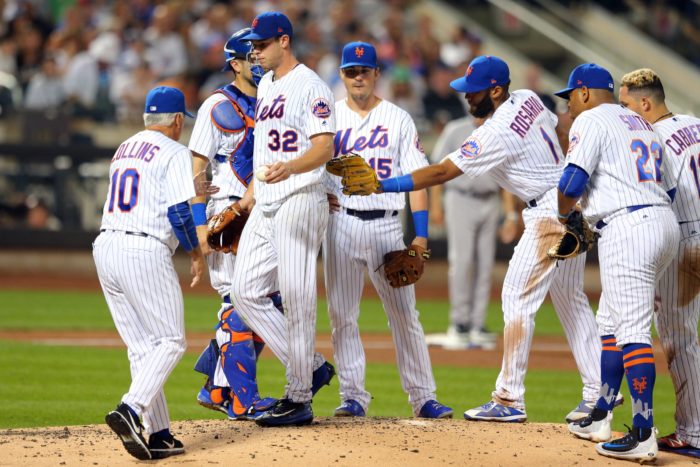
In the recent past, several Mets have suffered from pain in their elbow which has resulted in an ulnar nerve transposition. This has lead to a bit of confusion and frustration in the fan base, and I hope to address what is going on to the best of my ability. I am not a doctor, but I have done a bit of research on the topic.
What is the ulnar nerve?
The Ulnar nerve runs down the length of the arm and ultimately ends in the tip of the pinky finger. It enervates the palmar side of the pinky and half of the ring finger, extending all the way to the bed of the fingernails. It also enervates multiple muscles in the forearm, wrist, and hand.
On a personal level, I severed this nerve in my hand, which has partially paralyzed my pinky and ring finger. It feels weird having a line down the length of my ring finger where it is numb on one side and normal on the other.
The ulnar nerve is the largest exposed nerve in the human body. Meaning, it is not covered by muscle or bone tissue. The skin is the only structure that is covering the nerve to any significant capacity, and the skin is quite thin and under a great deal of tension. This means the nerve is really quite exposed to the world and easy to damage or irritate. As a result, damaging this nerve is very common, and we tend to call this the ‘funny bone’. I am sure everyone has hit their elbow and experienced this pain.
Critically, though, this nerve isn’t exposed for the entire length of the arm. Rather, it passes through a small tunnel, the cubital tunnel, as it wraps around the medial epicondyle in your elbow. You may have heard of the medial epicondyle before, it is often associated with UCL injuries. The anterior bundle of the ulnar collateral ligament attaches to the medial epicondyle. More on this in a moment.
So to sum things up: the ulnar nerve controls several areas of the forearm, wrist, hand, and fingers. It is exposed at the top of the arm, between the shoulder and the elbow, where it then travels around the outside of the elbow, protected only by skin, through a small tunnel as it wraps around the medial epicondyle, and then into the forearm.
UCL Reconstruction
Ulnar Collateral Ligament Reconstruction is one of the most groundbreaking medical advancements in sports history. It gives new life and a second chance to athletes all over the world, and of course pitchers are one of the main beneficiaries. Dr. Jobe developed a technique for this surgery, and it became famous with the successful reconstruction of Tommy John’s elbow back in 1974.
In the years since, Dr. Jobe trained many new orthopedic surgeons, including the famed Dr. James Andrews, Dr. ElAttrache, Dr. Cain, and Dr. Limpisvasti, just to name a few. Each of these doctors, to my knowledge, continue to perform UCL reconstruction using the method Dr. Jobe pioneered back in the 70s, although with some updates to methodology that have come from years of experience.
Dr. Altchek, though, is a bit different. He has developed his own methodology for UCL Reconstruction, which is called the docking technique. Altchek’s method differs from Jobe’s method in one key way: Jobe’s technique consists of exposing the entire length of the UCL, from it’s insertion point into the ulna all the way to the insertion point in the medial epicondyle. This requires dissecting quite a length of tissue, including the cubital tunnel that contains the Ulnar Nerve.
Dr. Altchek’s docking method does not require exposing the entire UCL. Rather, the docking method can be performed by splitting the muscle immediately in front of the key areas required for the reconstruction. This results in a less traumatic surgery for the patient, fewer things that can go wrong on the operating table, a smaller incision/scar, and a faster operation (30 minutes as opposed to 60 minutes, which means less anesthesia, fewer possible complications, etc).
As a result, the Jobe method of UCL reconstruction necessitates moving the ulnar nerve, whereas Altchek’s docking technique does not.
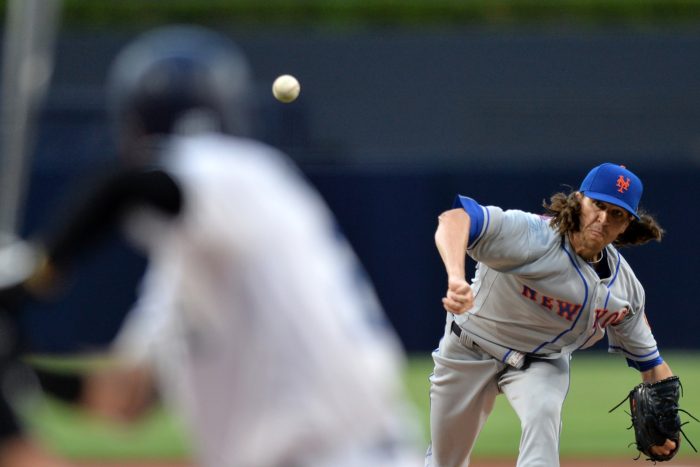
Ulnar Nerve Transposition
The ulnar nerve has a few ‘design flaws’, which I have already mentioned. First, it is exposed. Second, it passes through a complicated joint. Third, it passes through a tunnel. All three of these issues can and regularly do present issues for many people of all ages and activity levels. It is especially bad in people who regularly stress their elbow, like a baseball player.
Especially a pitcher, who performs many activities that put large valgus stresses on the elbow joint. A valgus stress is one where the joint is pushed off of center. Or, in other words, when the elbow bends perpendicular to the direction it is meant to bend. This torque puts tremendous stress on the UCL and causes the bones to rub against each other in unnatural ways which can cause bone chips to break off, and stress the ulnar nerve.
In other words, the elbow isn’t designed to throw a baseball.
But the location of the nerve is especially troubling. Especially after UCL reconstruction, which can cause scar tissue to build up. Remember, this nerve is passing right next to the UCL, so the scar tissue can press against this nerve, irritating it. This irritation can cause what is called cubital tunnel syndrome which results in pain or numbness in the hand, wrist, forearm, and elbow.
In order to alleviate this pain, you must reposition the nerve. In order to do so, you cut the nerve out of the cubital tunnel, then maneuver the nerve from behind the medial epicondyle to in front of it, where it can be positioned under a fascial sling (where fascia covering the muscle of the forearm is sliced into a small strip and wrapped around the nerve to hold it in place) or behind muscle tissue for further protection.
After the transposition surgery, the nerve no longer runs along the bone on the outside the elbow, but rather on a more superficial area of the forearm. After which the arm is placed into a cast where it must rest on a 45 degree angle for several weeks. Finally, the patient will go through strength and range of motion exercises to build the arm back up to the level of strength and mobility it had prior to surgery.
How this relates to the Mets
Dr. Altchek has performed UCL Reconstruction surgery on many Mets pitchers, although not all of them. Matt Harvey, for example, had Dr. James Andrews perform his surgery. Steven Matz and Jacob deGrom, each had theirs performed by Altchek using the docking technique. This docking technique is considered to be a very good method for reconstruction, although it is a more conservative surgery in many ways. There is a smaller incision, less tissue is disturbed, and critically less time under anesthesia. Keep in mind that anesthesia is effectively a poison that is being closely tracked by a dedicated anesthesiologist. The complications from anesthesia can be very, very severe, including death, so the less time under anesthesia, the better. Altchek’s method cuts the time in half, so that is certainly a very good thing.
Altchek’s method also keeps the ulnar nerve in place and undisturbed. As a result, you can have complications with the ulnar nerve, which can be quite painful and debilitating, requiring ulnar nerve transposition.
To many people, the upsides of Altchek’s method supersede the potential drawbacks. Would you rather spend an extra 30 minutes under anesthesia, having an even more invasive procedure performed just on the off chance that maybe you might prevent an injury you don’t have? I think many people would prefer to have as little changes as possible in their body. After all, each cut with the surgeon’s scalpel comes with potential complications of their own.
Let’s get down to brass tax on this issue: Are the Mets doing something wrong here? With this injury, I do not believe they are. They are using a highly regarded, albeit conservative, surgical repair from a world renowned orthopedic surgeon. If you want to critique their public relations staff and the way they communicate with the public, go for it, but pointing to these Ulnar Nerve Transpositions as a sign of some major medical issue is a bit much.




